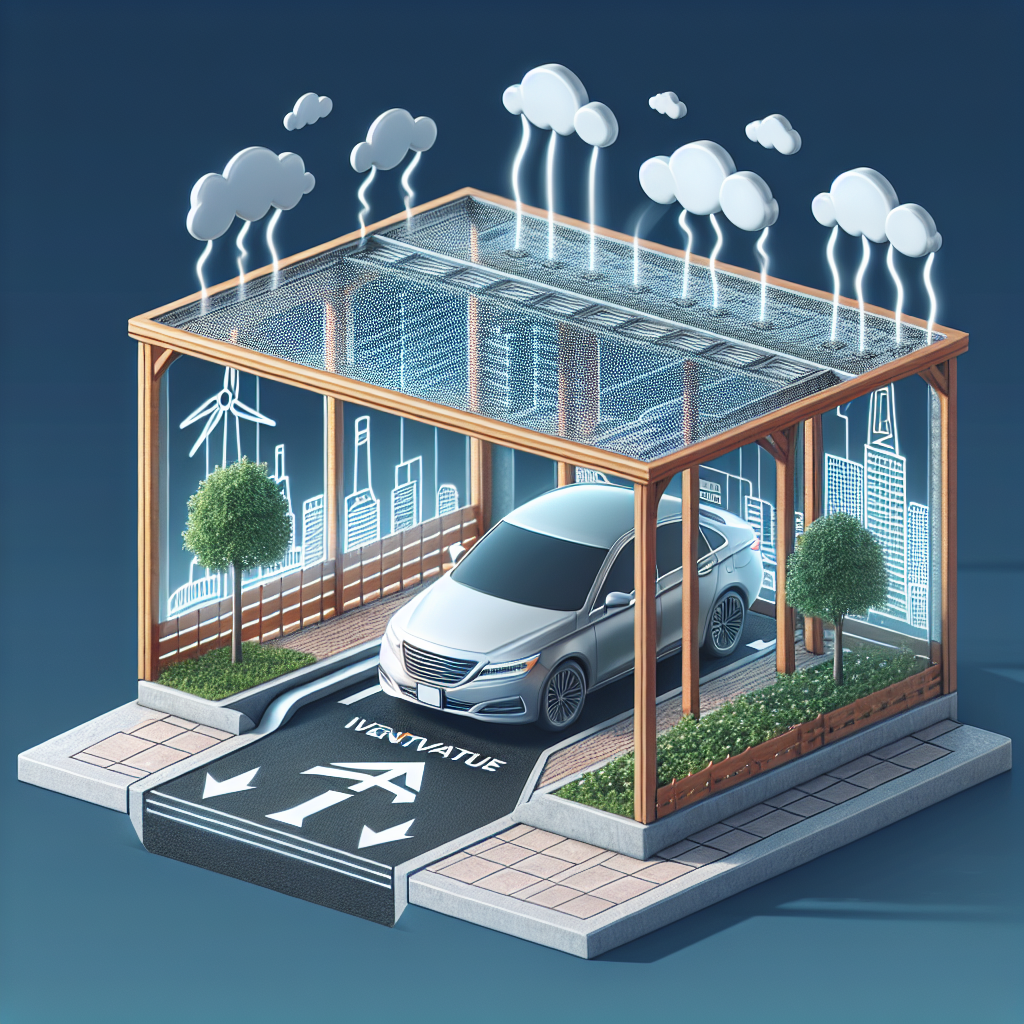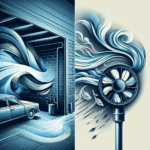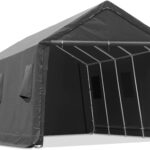Imagine coming home after a long day at work, parking your car in your carport, and immediately being hit with a strong, musty odor. You might not think much of it at first, but did you know that poor ventilation in carports can lead to serious health issues and even damage to your vehicle? In this article, you’ll discover the importance of ventilation in carports and how it can significantly improve air quality, ensuring fresh and clean air for both you and your car. So, let’s dive into the world of carport ventilation and uncover the benefits it brings.
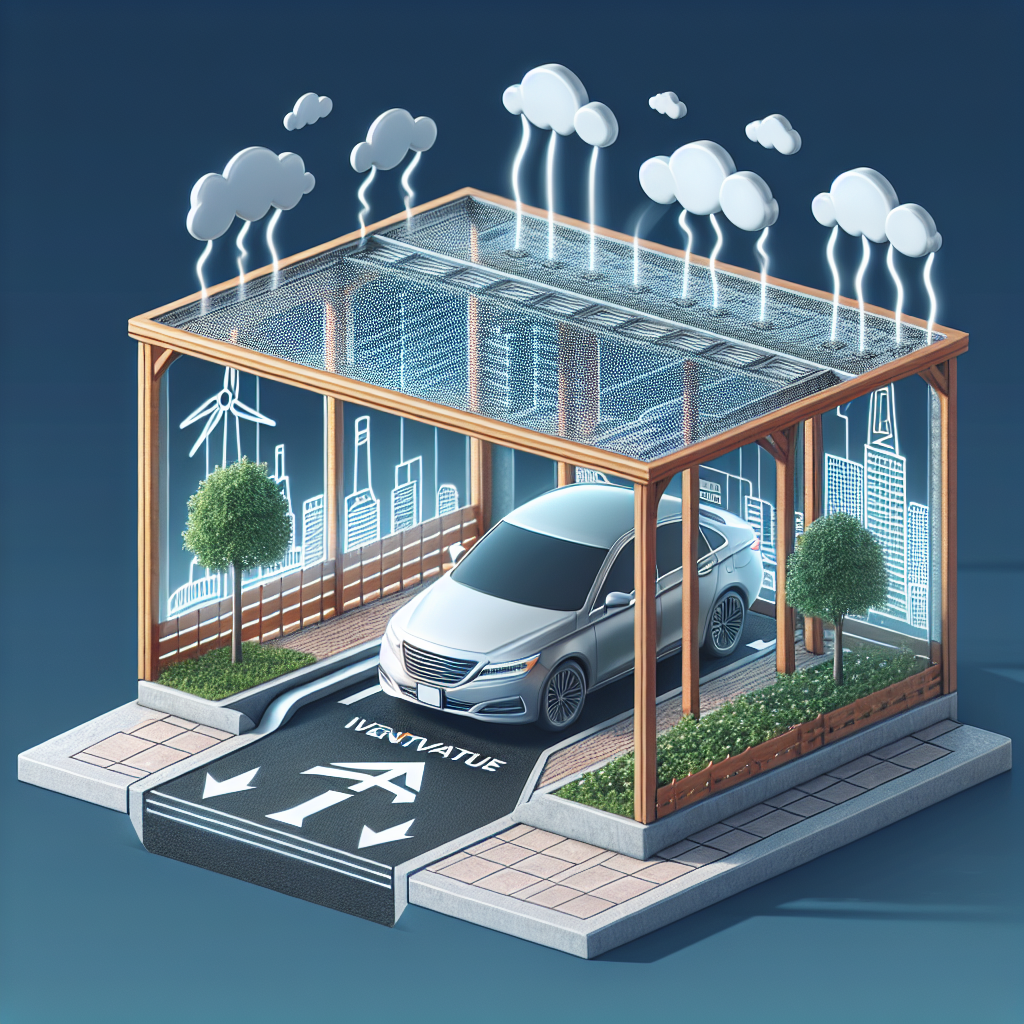
Importance of Ventilation in Carports
Carports are an essential part of our homes, providing shelter for our vehicles and other belongings. However, many people overlook the importance of proper ventilation in these structures. Ventilation plays a crucial role in ensuring a healthy and safe environment within carports. In this article, we will explore the various reasons why ventilation is important in carports and how it can be achieved.
1.1 Health and Safety Concerns
One of the primary reasons why ventilation is essential in carports is to address health and safety concerns. When a car is parked in a carport, it emits harmful gases such as carbon monoxide and volatile organic compounds (VOCs). These pollutants can accumulate in an enclosed space like a carport, posing serious health risks to individuals who spend time in or around it.
Without proper ventilation, these pollutants can reach dangerous levels, leading to symptoms such as headaches, dizziness, and even carbon monoxide poisoning. By ensuring adequate ventilation, fresh air can continuously circulate in the carport, diluting and removing these harmful gases, thus reducing the risk to your health and safety.
1.2 Removal of Pollutants
Carports are not only exposed to pollutants generated by vehicles but also to other sources of contaminants. These may include chemicals stored in the carport, emissions from nearby factories or exhaust systems, and even household cleaning products.
Having proper ventilation in your carport helps to remove these pollutants from the air. Ventilation systems can effectively extract and expel contaminated air, replacing it with fresh outdoor air. This constant air exchange helps maintain a cleaner and healthier environment, reducing the potential for respiratory issues or other related health problems.
1.3 Reducing Condensation and Mold Growth
Another issue often encountered in carports is condensation, especially in areas with high humidity or during cold seasons. Condensation occurs when warm, moist air comes into contact with cool surfaces, leading to the formation of water droplets. This excess moisture can promote the growth of mold, mildew, and other fungi, which can degrade the quality of air and cause health issues.
Proper ventilation can help mitigate condensation by balancing the temperature and humidity levels in the carport. By providing a constant flow of fresh air, ventilation systems reduce the chances of moisture accumulation, preventing the formation of condensation and inhibiting the growth of mold and other harmful microorganisms.
Understanding Air Quality in Carports
Before delving deeper into the importance of ventilation, it is crucial to understand the concept of air quality in carports. Air quality refers to the level of purity and cleanliness of the air we breathe. It is contingent upon several factors, including the presence of pollutants, humidity levels, and the overall circulation of air.
2.1 Sources of Air Pollutants
Carports are subject to a wide range of air pollutants that can compromise air quality. Some of the primary sources of pollutants in carports include vehicle emissions, toxic fumes from stored chemicals or paints, and outdoor contaminants that seep into the structure. These pollutants can accumulate and linger in an enclosed carport, resulting in poor air quality.
2.2 Harmful Effects of Poor Air Quality
Poor air quality in carports can have detrimental effects on our health and well-being. Prolonged exposure to air pollutants can lead to respiratory problems, such as asthma or allergies, and exacerbate existing conditions. It can also cause headaches, nausea, and fatigue, impacting our overall quality of life.
Furthermore, poor air quality can also affect the structural integrity of the carport itself. Excessive moisture from condensation or inadequate ventilation can cause corrosion, rust, and decay, leading to potential damage and costly repairs.
2.3 Factors Affecting Air Quality
Several factors can influence the air quality within a carport. The size of the carport, the number of vehicles parked inside, and the level of insulation all contribute to the air quality. Additionally, climate factors such as humidity levels, outdoor air pollution, and even the surrounding environment can affect the overall air quality in the carport.
Understanding these factors is essential in designing an effective ventilation system that addresses specific air quality concerns and provides optimal conditions for the carport and its occupants.
Common Ventilation Issues in Carports
Despite the numerous benefits that ventilation provides, several common issues can arise in carports that compromise air circulation and indoor air quality.
3.1 Inadequate Air Circulation
Inadequate air circulation is one of the most prevalent ventilation issues faced by carports. This occurs when fresh air cannot effectively flow into and out of the carport, leading to stagnant air. Stagnant air creates a breeding ground for pollutants and can exacerbate condensation and mold growth.
To solve this issue, it is essential to ensure proper air circulation by strategically placing ventilation openings and introducing mechanisms that allow for the flow of fresh air. This way, the stagnant air is continuously replaced, improving the overall air quality.
3.2 Insufficient Ventilation Systems
Insufficient ventilation systems often result from poor planning or inadequate knowledge about the importance of ventilation in carports. Some carport owners may rely on natural ventilation alone, which may not be sufficient in certain climates or circumstances. Insufficient ventilation systems can lead to improper air exchange, leaving more pollutants in the air and compromising the health and safety of individuals occupying the carport.
To address this issue, it is crucial to invest in proper ventilation systems that are tailored to the specific needs and conditions of your carport. This may include a combination of natural and mechanical ventilation methods to ensure adequate airflow.
3.3 Lack of Outdoor Air Intake
In some cases, carports may lack outdoor air intake, which can severely hinder the ventilation process. Without a source of fresh outdoor air, the air in the carport becomes stale and polluted. This can lead to a buildup of contaminants and stifling conditions inside the carport.
To overcome this issue, incorporating outdoor air intake mechanisms into the ventilation system is crucial. These mechanisms can bring in fresh air from outside and facilitate proper airflow, promoting a healthier and more comfortable environment within the carport.
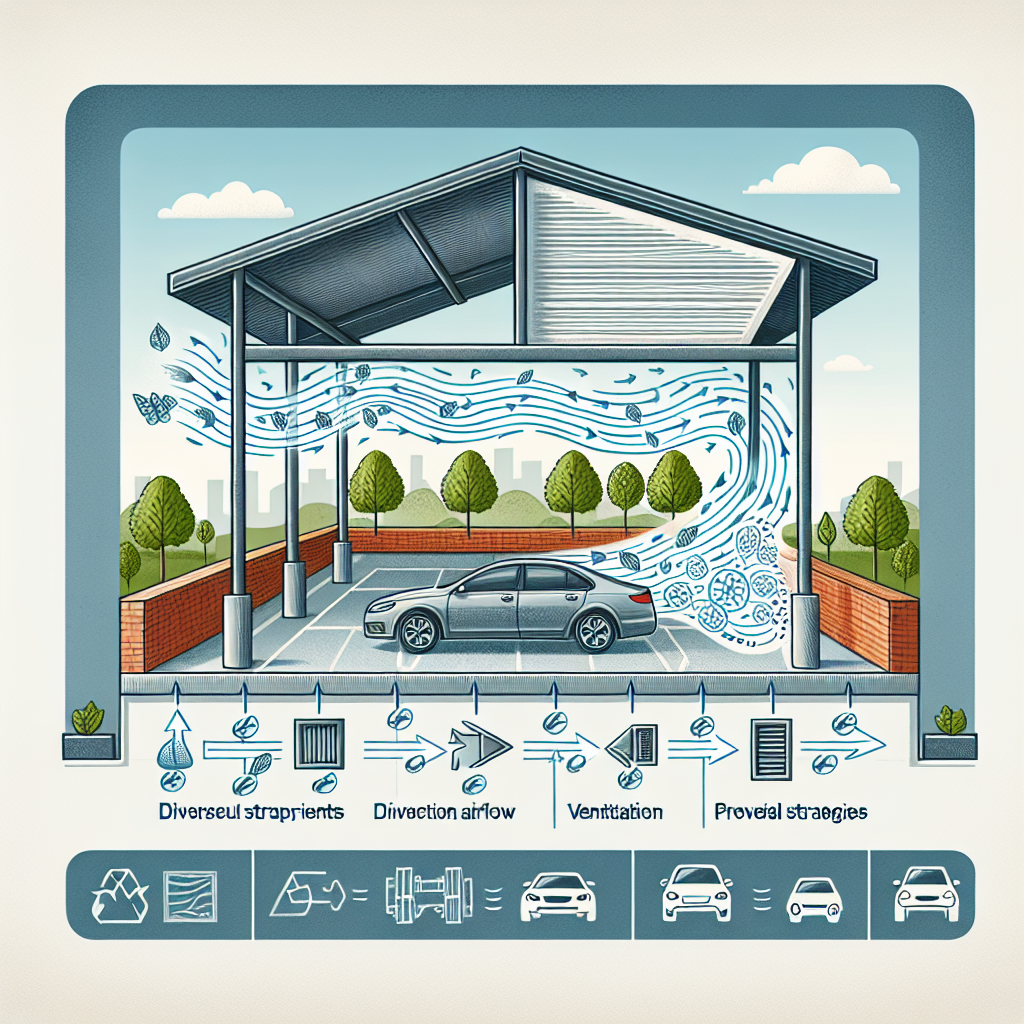
Types of Ventilation Systems for Carports
Now that we understand the importance of ventilation and the potential issues that can arise, let’s explore the different types of ventilation systems commonly used in carports.
4.1 Natural Ventilation
Natural ventilation utilizes natural airflow and pressure differentials to exchange air in the carport. This can be achieved through strategic placement of windows, openings, or vents. Natural ventilation is usually the more energy-efficient option, as it relies on natural forces like wind and temperature differentials.
4.1.1 Utilizing Openings and Windows
Utilizing openings and windows in the carport design allows for the flow of fresh air. Placing windows strategically to take advantage of prevailing winds can facilitate natural ventilation. Additionally, considering the size and placement of openings to create cross ventilation can optimize the air exchange within the carport.
4.1.2 Installing Vents or Louvers
Installing vents or louvers can greatly enhance natural ventilation. Vents or louvers can be strategically placed to promote airflow and create a through-draft effect, allowing fresh air to circulate and displace stagnant air. This simple addition can significantly improve air quality and reduce the buildup of pollutants and condensation.
4.2 Mechanical Ventilation
In cases where natural ventilation alone is insufficient, mechanical ventilation systems can be employed to increase the flow of air in the carport. Mechanical ventilation relies on powered systems to extract stale air and introduce fresh air.
4.2.1 Exhaust Fans
Exhaust fans are commonly used in carports to remove stale air. These fans are installed to extract polluted air from the carport and expel it to the outside. By creating negative pressure, exhaust fans facilitate the inflow of fresh air, ensuring proper air exchange and improving overall air quality.
4.2.2 Air Purification Systems
Air purification systems utilize filters and other technologies to remove pollutants and contaminants from the air. These systems are particularly useful in carports located in areas with high levels of outdoor air pollution or when there are specific concerns regarding air quality. Air purifiers can significantly improve the overall air quality in the carport by effectively removing harmful particles and odors.
4.2.3 Ventilation Fans with Filters
Ventilation fans with filters combine the benefits of mechanical ventilation and air purification. These fans can extract stale air while filtering out pollutants, allergens, and other particles. They help maintain a clean and healthy environment by continuously circulating fresh, filtered air throughout the carport.
Considerations for Proper Ventilation
When planning and implementing a ventilation system for your carport, there are several crucial considerations to keep in mind to ensure optimal results.
5.1 Calculating Ventilation Requirements
Calculating the ventilation requirements of your carport is essential to determine the necessary airflow and size of the ventilation system. Factors such as the size of the carport, the number of vehicles, and the anticipated level of pollutants should be considered. Consulting with a professional can assist in accurately assessing the ventilation needs specific to your carport.
5.2 Placement and Orientation of Ventilation Systems
The placement and orientation of ventilation systems play a significant role in the effectiveness of the airflow. Ventilation openings, windows, and vents should be strategically positioned to take advantage of natural forces such as prevailing winds or temperature differentials. Proper placement ensures optimal air circulation and air exchange within the carport.
5.3 Maintenance and Regular Inspections
Maintaining and inspecting your ventilation system regularly is essential to guarantee its efficiency and longevity. Filters should be cleaned or replaced as recommended by the manufacturer, and fans or mechanical components should be inspected for any signs of wear or malfunction. Regular maintenance and inspections ensure that the ventilation system continues to provide fresh, clean air and operates at its optimum capacity.
Benefits of Improving Air Quality in Carports
Improving air quality in carports through proper ventilation systems yields numerous benefits, both for our health and the overall condition of the carport.
6.1 Health Benefits
By enhancing air quality, we can create a healthier environment within the carport. Fresh, clean air free from pollutants minimizes the risk of respiratory problems, allergies, headaches, and other health issues. Improved air quality also contributes to better sleep, increased energy levels, and overall well-being.
6.2 Vehicle Maintenance
Proper ventilation can also extend the lifespan of vehicles stored in carports. With reduced exposure to pollutants, such as corrosive gases or moisture, vehicles are less likely to experience rust, interior damage, or other issues caused by poor air quality. Maintaining the air quality within the carport can help keep your vehicle in optimal condition, reducing the need for costly repairs or premature deterioration.
6.3 Reduced Moisture Damage
Ventilation systems play a crucial role in minimizing condensation and reducing excess moisture in the carport. Adequate airflow helps prevent the buildup of moisture, thereby reducing the chances of mold, mildew, and related moisture damage. By maintaining optimal humidity levels, ventilation systems safeguard the structural integrity of the carport and protect stored items from moisture-related deterioration.
Regulations and Standards for Carport Ventilation
Several regulations and standards are in place to provide guidance for carport ventilation. Adhering to these regulations ensures compliance and helps ensure the safety and well-being of individuals using or occupying the carport.
7.1 Building Codes and Guidelines
Building codes typically include specific requirements for ventilation systems in carports. These codes dictate factors such as the number and size of ventilation openings, minimum airflow rates, and recommendations for outdoor air intake mechanisms. Compliance with building codes guarantees that the ventilation system meets the necessary standards and promotes a safe and healthy environment.
7.2 Occupational Safety and Health Administration (OSHA) Standards
For commercial or industrial carports, compliance with Occupational Safety and Health Administration (OSHA) standards is crucial. OSHA provides guidelines and regulations to ensure the safety and well-being of workers in various settings, including carports. These standards may include requirements for ventilation rates, air quality monitoring, and the use of protective equipment in specific work environments.
7.3 Environmental Protection Agency (EPA) Recommendations
The Environmental Protection Agency (EPA) offers recommendations and guidelines for maintaining good indoor air quality. Although not mandatory, adhering to these recommendations can significantly contribute to a healthier and safer indoor environment within the carport. The EPA provides valuable information on improving ventilation, reducing indoor air pollution, and addressing other air quality concerns.
Case Studies on Air Quality Improvement
To better understand the impact of proper ventilation in carports, let’s explore a few case studies that highlight the successful implementation of ventilation systems and the resulting air quality improvements.
8.1 Successful Implementation of Ventilation Systems
In a case study conducted at a residential carport, the installation of a mechanical ventilation system significantly improved the air quality within the structure. The ventilation system consisted of exhaust fans and an air purification system. After the system’s installation, the air quality improved, reducing the presence of pollutants such as carbon monoxide and volatile organic compounds. Additionally, the condensation and mold growth issues were mitigated, creating a healthier and more comfortable carport environment.
8.2 Before and After Air Quality Comparisons
Another case study evaluated the impact of natural ventilation on air quality in a commercial carport. Before the installation of ventilation louvers and windows, the carport suffered from poor air circulation and high levels of pollutants. After implementing natural ventilation methods, air quality drastically improved, and pollutant levels were reduced. The study demonstrated the effectiveness of natural ventilation in enhancing air quality in carports.
Conclusion
Ensuring proper ventilation in carports is crucial for maintaining a healthy and safe environment for both vehicles and individuals. From health and safety concerns to the removal of pollutants and prevention of condensation, there are numerous reasons why ventilation should be a top priority in carport design and maintenance.
By understanding the sources of air pollutants, the harmful effects of poor air quality, and the factors that affect air quality, we can implement effective ventilation systems to address these concerns. Whether through natural ventilation methods or mechanical ventilation systems, the goal is to achieve optimal air circulation and exchange.
Considering factors such as ventilation requirements, placement, and orientation, as well as regular maintenance and inspections, are vital to maximize the benefits of proper ventilation in carports. By improving air quality, we can enhance our health, protect our vehicles, and prevent moisture damage.
Adhering to regulations and standards set by building codes, OSHA, and the EPA ensures compliance and safety. By learning from successful case studies, we can gather valuable insights and inspiration for implementing effective ventilation systems in our carports.
In conclusion, don’t overlook the importance of ventilation in carports. Encouraging measures to improve air quality through proper ventilation will create a safer, healthier, and more pleasant environment for you, your vehicles, and your belongings.

